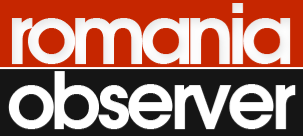Romania’s economic outlook for 2024 reflects a mix of resilience and vulnerability, shaped by internal challenges and a shifting regional context. Despite a modest GDP growth forecast of +0.8% for the full year, structural weaknesses, adverse agricultural conditions, and external headwinds have left their mark, according to reports from Erste Group. Romania and neighboring Hungary are expected to grow below 1% in 2024, marking weaker-than-anticipated economic performance. By 2025, GDP growth across most Central and Eastern European (CEE) countries is projected to rebound to around 2%, but this figure remains below potential for Romania, Hungary, and Poland. Fiscal consolidation efforts are a critical factor weighing on growth, with Romania, Czechia, and Slovakia leading the region in deficit reduction. While inflation is set to ease further in Romania, Croatia, and Serbia, countries like Hungary and Poland are likely to see inflation remain at 2024 levels. Geopolitically, sustaining NATO commitments will be pivotal for Romania and its CEE peers, especially as defense spending expectations grow under a possible second Trump administration. While Hungary, Poland, and Slovakia already meet NATO’s 2% GDP defense spending goal, Romania lags but has made notable progress since 2019. The region’s vulnerability to external shocks, such as a slowdown in Germany’s economy, remains a concern, with Romania and Czechia likely to be the most affected in the coming years. The third quarter of 2024 revealed a -0.1% contraction in quarterly GDP, while the annual growth rate held steady at +1.1%. Agriculture, heavily impacted by severe weather conditions, was a significant drag, subtracting 1.9 percentage points (pp) from the annual growth rate. This negative impact reflects the broader struggles in the sector, which has reduced its contribution to Romania’s GDP by 0.6pp over the first three quarters of the year. Services remain the primary growth engine, contributing 1.3pp in Q3 2024, with net taxes adding another 1.7pp. Industry and construction made neutral contributions. On the demand side, private consumption fueled by real wage growth and lower inflation has been the standout driver, adding 3.2pp to the annual growth rate in the first three quarters. However, this consumption boom has spurred higher imports, leading to a negative contribution of -2.8pp from net exports, underscoring Romania’s reliance on imports and the structural imbalances in its economy. Looking ahead, Romania’s 2025 GDP growth is forecasted at +2.8%, but risks are tilted to the downside. The anticipated fiscal measures to address the country’s large budget deficit could dampen growth if poorly executed. Moreover, Romania faces a challenging regional environment. As Central and Eastern European (CEE) countries grapple with slower economic momentum, rising protectionism, and global uncertainties, Romania must navigate these headwinds while managing its internal vulnerabilities. Political instability has exacerbated economic uncertainty. In November, market jitters led to a sell-off in Romanian government bonds, pushing 10-year yields to 7.3%. While monetary easing across the CEE region could bring some relief in 2025, Romania’s fiscal consolidation challenges may continue to weigh on investor confidence. Additionally, Romania’s economic prospects could face further pressure if its credit rating comes under review. Regional context: A mixed bag for CEE Romania’s economic struggles mirror trends across the CEE region, where countries are entering 2025 with mixed prospects. While private consumption and investment are expected to drive higher growth regionally, Romania lags behind peers like Serbia, which is capitalizing on ambitious development plans. Inflation remains a concern, with core inflation stubbornly high due to dynamic wage growth, particularly in the services sector. However, Romania’s disinflationary trajectory offers some hope, with monetary easing likely to provide further support. Opportunities and risks for 2025 For Romania, the path forward hinges on addressing structural weaknesses and implementing fiscal reforms without stifling growth. Strengthening domestic production and reducing reliance on imports will be critical to mitigating the drag from net exports. Moreover, fostering political stability and maintaining investor confidence are imperative as the country navigates a complex economic landscape. As CEE economies contend with a mix of protectionism and sluggish recovery, Romania’s ability to adapt and leverage regional growth opportunities could determine whether it remains a regional laggard or emerges stronger in the coming years.

